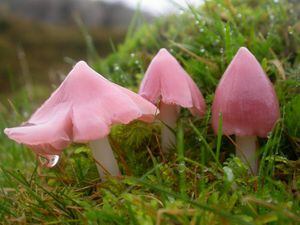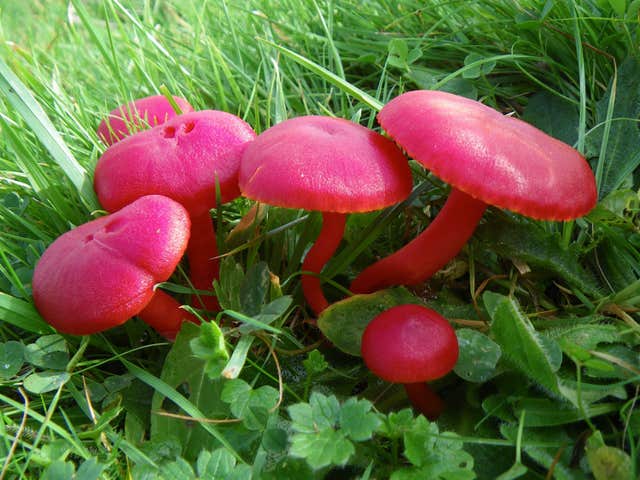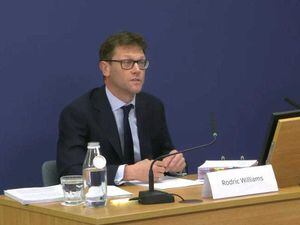Public urged to join hunt for waxcap fungi to protect carbon-storing grasslands
Nature charity Plantlife is urging volunteers to send in sightings via its ‘WaxcApp’ app this autumn.

People are being urged to look out for colourful waxcap fungi, as part of efforts to help experts protect carbon-storing wildlife-rich grasslands.
Nature charity Plantlife said it received hundreds of records for rare waxcap grasslands across the country last year, and is urging volunteers to send in sightings via its “WaxcApp” app again this autumn.
At this time of year, the pinks, oranges and reds of waxcap fungi which pop up in meadows, lawns and graveyards are a good indicator of long undisturbed grassland habitat.
These old, species-rich grasslands are not just important for the hundreds of wildflowers that grow in them, but are a key natural solution in the climate crisis alongside forests and peatlands, the charity said.
Undisturbed grasslands store a third of the world’s land-based carbon in their soils, and old, species-rich areas store significantly more than land with few species or monocultures. But the UK has lost 97% of its traditional meadow and grassland habitat, which now covers less than 1% of the country’s land area.
Sending in sightings of waxcaps can help experts identify forgotten patches of old grassland, which they can then target for protection, Plantlife said.

“We can’t overlook this vital habitat as a key contender in the fight against climate change with its carbon-locking ability, but we need to know where the missing pieces are first.
“The fungi kingdom is lending us a helping hand this autumn by lighting up the forgotten pockets of our grasslands – quality remnants potentially unchanged and untouched for hundreds and hundreds of years and which need our protection.”
He urged people to join the waxcap hunt again this year.
Natural Resources Wales, a principal partner and funder of the scheme, said the results have been remarkable.
The government agency’s Sam Bosanquet said: “We thought we had a good record of Wales’ grassland fungus diversity after more than 25 years of wide-ranging surveys, but WaxcApp users have found nearly 40 previously unknown sites for the Pink Ballerina Waxcap, a lovely fungus which, like other waxcaps, is a fantastic indicator of old undisturbed grassland.
“This will help Government to protect these grasslands and to work with partner organisations like Plantlife to provide advice to land managers on how to look after them.”
To take part, people can visit Plantlife’s website – https://www.plantlife.org.uk/uk/discover-wild-plants-nature/habitats/grassland/waxcaps-fungi/waxcapp-survey – for more information and to download the WaxcApp.





